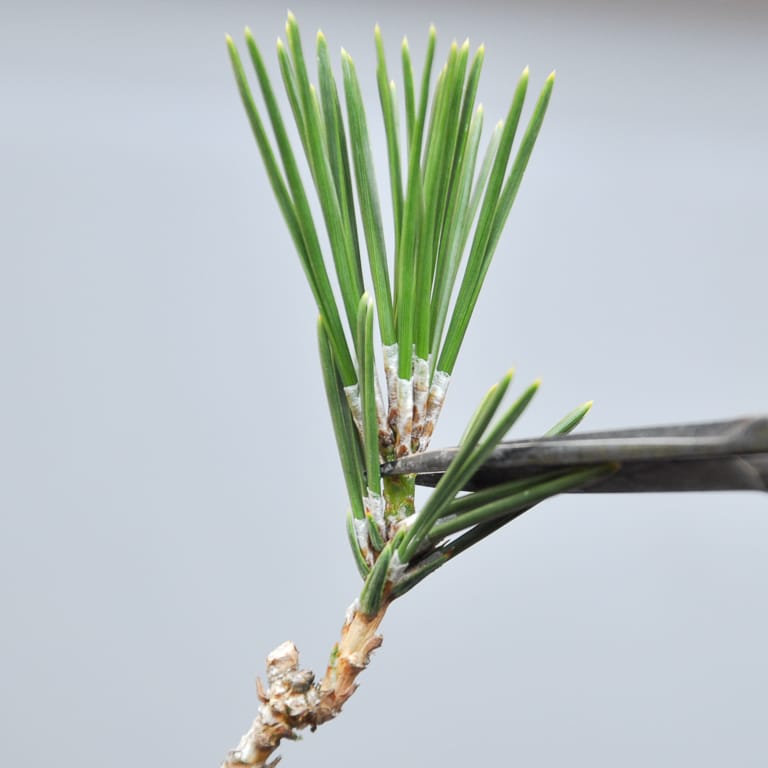Decandling is a great technique for refining selected pine species trained as bonsai. At its most basic, decandling refers to the removal of spring growth with the aim of stimulating summer growth (see “Decandling” for details).

Decandling a Japanese black pine
As great as this technique is, its full application is limited to a small number of species. The aim behind this post is to provide a reference that indicates how different species respond to the technique.
Over the years I’ve worked with a number of different pines and have learned which respond well to decandling and which don’t. That said, there are far more species that I haven’t worked with or haven’t tried decandling. For these species, I’d love to hear your suggestions for where these trees fit in.
I’ve created four simple categories below but will be updating this post as more information comes in. I’ve also noted which species I’m less familiar with as an encouragement for your contributions.
For more about different approaches to managing spring growth, see “Approaches to managing new shoots on pine bonsai.”
Pine species that respond reliably to decandling
Healthy specimens of the following species can be decandled annually with relatively predictable results.
- Japanese black pine, Pinus thunbergii
- Japanese red pine, Pinus densiflora
- Pitch pine, Pinus rigida (no direct experience)
- Loblolly pine, Pinus taeda (no direct experience)
- Slash pine, Pinus elliottii (no direct experience)
- Long leaf pine, Pinus palustris (no direct experience)
- Short leaf pine, Pinus echinata (no direct experience)
Pine species that can benefit from decandling techniques
The pines in this category can respond well to decandling, but not in all cases. Tree age, stage of refinement, or the climate in which the tree is grown may affect results.
- Corkbark Japanese black pine cultivars
- Dwarf Japanese black pine cultivars
- Monterey pine, Pinus radiata
- Scots pine, Pinus sylvestris (no direct experience)
- Aleppo pine, Pinus halepensis
- Italian stone pine, Pinus pinea
Pine species that may benefit from limited decandling techniques
Pines in this category don’t reliably produce summer growth after decandling, but the technique may be useful to stimulate back buds.
- Virginia pine, Pinus virginiana (no direct experience)
- Austrian black pine, Pinus nigra
- Pinyon pine, multiple species (no direct experience)
- Mugo pine, Pinus mugo (see reader comments below for tips relating to mugo pines)
Pine species that do not typically respond well to decandling
Decandling techniques may be applied to the following species in limited situations, but the trees are less likely to respond like the trees in the categories above.
- Japanese white pine, Pinus parviflora
- Ponderosa pine, Pinus ponderosa
- Limber pine, Pinus flexilis
- Bristlecone pine, Pinus longaeva
- Foxtail pine, Pinus balfouriana
- Western white pine, Pinus monticola
- Shore pine/lodgepole pine, Pinus contorta
The above list is not complete. If you have questions about pines that do not appear on this list, note them in the comments below and I’ll make updates as more information comes in.
Subscribe to Indian Bonsai Art
New Posts Delivered Every Tuesday and Friday
